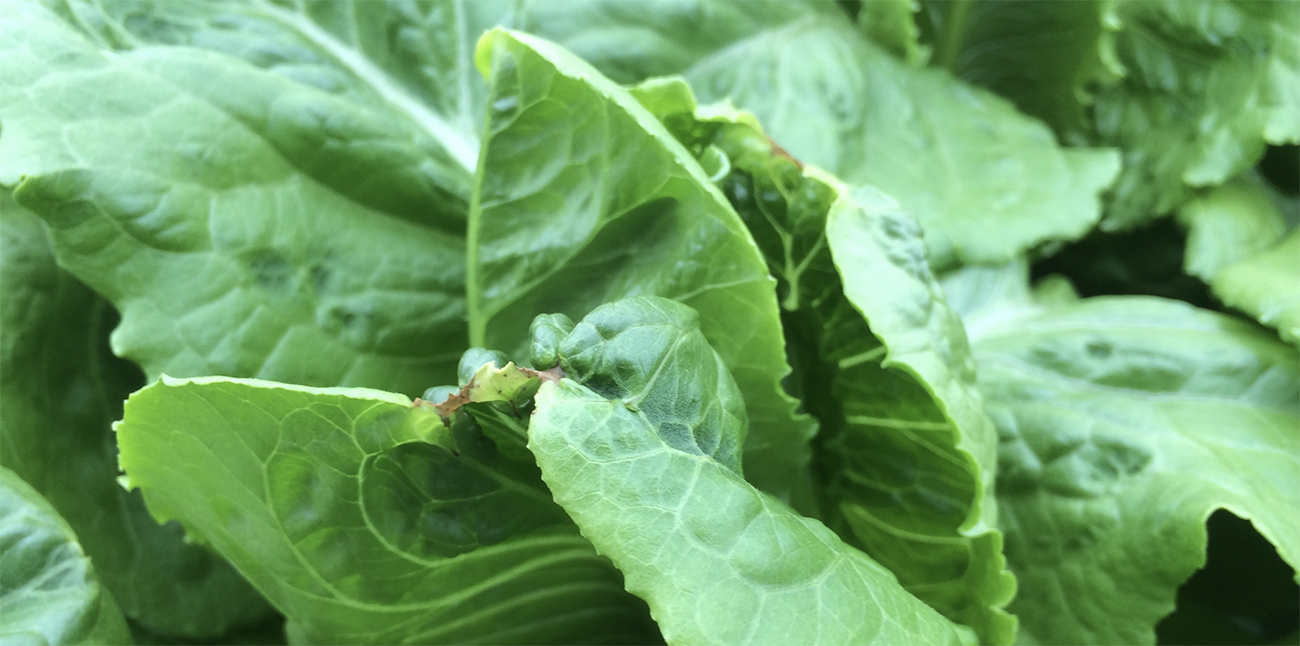
Tip burn can be a common problem in lettuce greenhouses. Tip burn is characterized by the presence of necrotic tissue at the growing area of lettuce. This symptom is a consequence of calcium deficiency. Calcium is required to build cell walls. When Calcium is deficient, new cells tend to die due to the lack of calcium to build up the cell wall.
Calcium is a passive nutrient moving by mass flow in plants. Most of the time the symptom of calcium deficiency in lettuce greenhouses can be a consequence of poor management in our greenhouse. Here are some important aspects to check at your greenhouse to fix the source of the problem and avoid tip burn:
Air velocity: Air velocity is crucial to reduce the boundary layer. Boundary layers can increase and affect stomata behavior when air flow is limited in our growing systems. If transpiration is reduced the move of Calcium will also be affected and by consequence tip burn can be developed. To avoid this issue is important to create uniform and constant airflow with a velocity between 0.03 to 1 m/s. Remember, greenhouse fans power and distribution should be selected to cover all greenhouse volume.
Relative humidity: High relative humidity can create conditions to promote tip burn. Usually high relative humidity can create more demand of air flow. Remember always to create enough air flow to avoid high humidity levels. The use of windows and exhaust fans can also improve situations of high relative humidity inside the greenhouse.
Density: High plant density can also create a higher demand of airflow. Usually this situation can cause more difficulties in creating uniform air flow over the crop. Also high density can create a microclimate inside the canopy which could be difficult to manage. The ideal density for regular hydroponic lettuce is 24 to 25 head of lettuce per square meter. However is always important to ask all specifications about the cultivar used to get more precise information about plant density.
Light intensity: Greenhouses and plant factories can create different environmental conditions. It is well know that plat factories can create conditions where high light intensity can promote tip burn. It is recommended to maintain a DLI not higher than 17 mol m-2 d-1 to avoid tip burn in lettuce. To avoid this problem is recommended always to monitor light intensity at least once per week to adjust light intensity of photoperiod to avoid high DLI over the crop. This situation is particular to plant factories systems.
Fertigation system maintenance: Last but not least. Is always important to check all the possible options when getting tip burn. Remember to check and do the correct maintenance to fertigation systems. Usually growing systems can count with tank and injectors to deliver nutrients in correct levels. Bad function of injectors can affect the movement of nutrients from the tanks. To spot this problem check the level of nutrient formula present at your tanks, the level of nutrients should be always the same between tanks.
Greenhouse management is key in order to maintain our crop healthy. Remember the more you measure the more you can manage. In Hort Americas we offer all the educational resources and products to maintain your growing systems in the best conditions. Tip burn can be very easy to avoid with the correct tools and knowledge!


